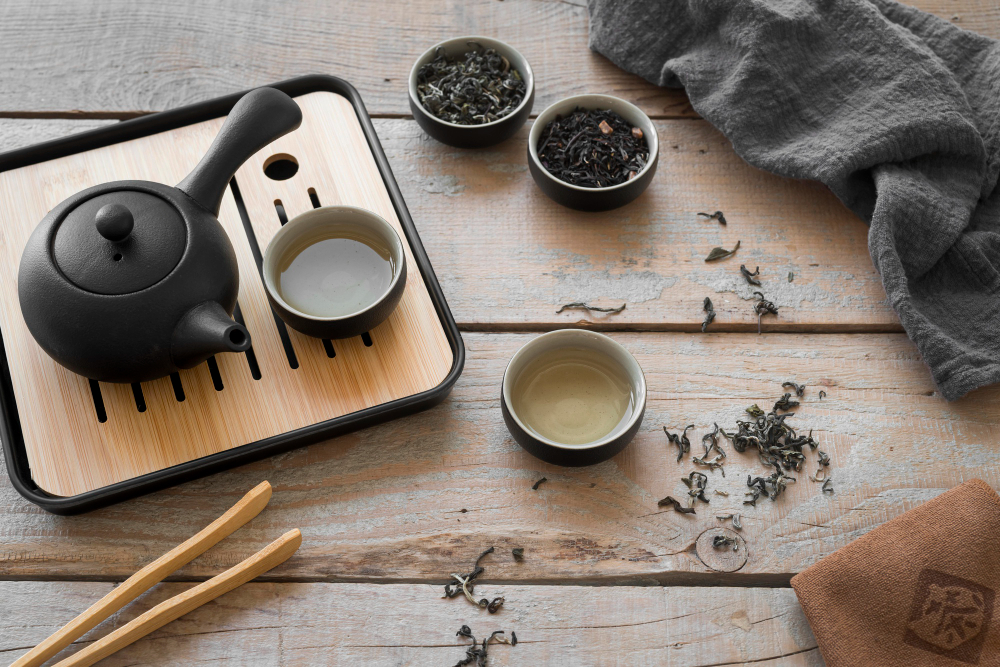Tea Art 茶藝

Chinese tea art (茶藝) includes all facets of tea, both physical and spiritual, that significantly influenced Chinese culture throughout history. Tea has been appreciated in China since 2000 BC, first for medicinal purposes and later for its refreshing qualities. The Chinese have valued this unique beverage, using tea leaves for gift giving, courtship rituals, ancestor worship, and imperial tribute taxes.
The practice of tea art (茶藝) can bring the spirit and wisdom of human beings to a higher orbit. Tea has an extremely close relationship to Chinese culture, and its study covers a wide field and has very rich content. It not only embodies the spirit of civilization, but also the spirit of ideological form. There can be no doubt that it has been beneficial in enhancing people’s social accomplishments and appreciation of art.
Tea art (茶藝) is an integral part of the excellent traditional Chinese culture, and its content is very rich. It consists of the history of tea cultivation, brewing, serving techniques, methods of consumption, arts, and the tea ceremony. Tea culture is the combination of tea art and spirit, and the expression of tea art through Spirituality. It emerged in China in the Tang dynasty, flourished in the Song and Ming dynasties.
For Chinese people, tea is very much a way of life. The country’s diverse climate creates literally hundreds of different types of tea; Oolong, Jasmine and Gunpowder are some of the more familiar teas.
Beginning in the 9th century, the enjoyment of tea spread to countries outside China, Japan and Korea, and later it spread to Middle East. For centuries China was the world’s only tea–exporting country. Around 19th century, stiff competition arose as India and Ceylon began to grow tea. Nowadays, China remains one of the largest suppliers of quality teas.
Tea and tea culture have been an intrinsic part of Chinese history and society for centuries. Tea, teawares, and drinking vessels are an important and unique window into the evolution of Chinese culture.
The practice of tea art (茶藝) can bring the spirit and wisdom of human beings to a higher orbit. Tea has an extremely close relationship to Chinese culture, and its study covers a wide field and has very rich content. It not only embodies the spirit of civilization, but also the spirit of ideological form. There can be no doubt that it has been beneficial in enhancing people’s social accomplishments and appreciation of art.
Tea art (茶藝) is an integral part of the excellent traditional Chinese culture, and its content is very rich. It consists of the history of tea cultivation, brewing, serving techniques, methods of consumption, arts, and the tea ceremony. Tea culture is the combination of tea art and spirit, and the expression of tea art through Spirituality. It emerged in China in the Tang dynasty, flourished in the Song and Ming dynasties.
For Chinese people, tea is very much a way of life. The country’s diverse climate creates literally hundreds of different types of tea; Oolong, Jasmine and Gunpowder are some of the more familiar teas.
Beginning in the 9th century, the enjoyment of tea spread to countries outside China, Japan and Korea, and later it spread to Middle East. For centuries China was the world’s only tea–exporting country. Around 19th century, stiff competition arose as India and Ceylon began to grow tea. Nowadays, China remains one of the largest suppliers of quality teas.
Tea and tea culture have been an intrinsic part of Chinese history and society for centuries. Tea, teawares, and drinking vessels are an important and unique window into the evolution of Chinese culture.
